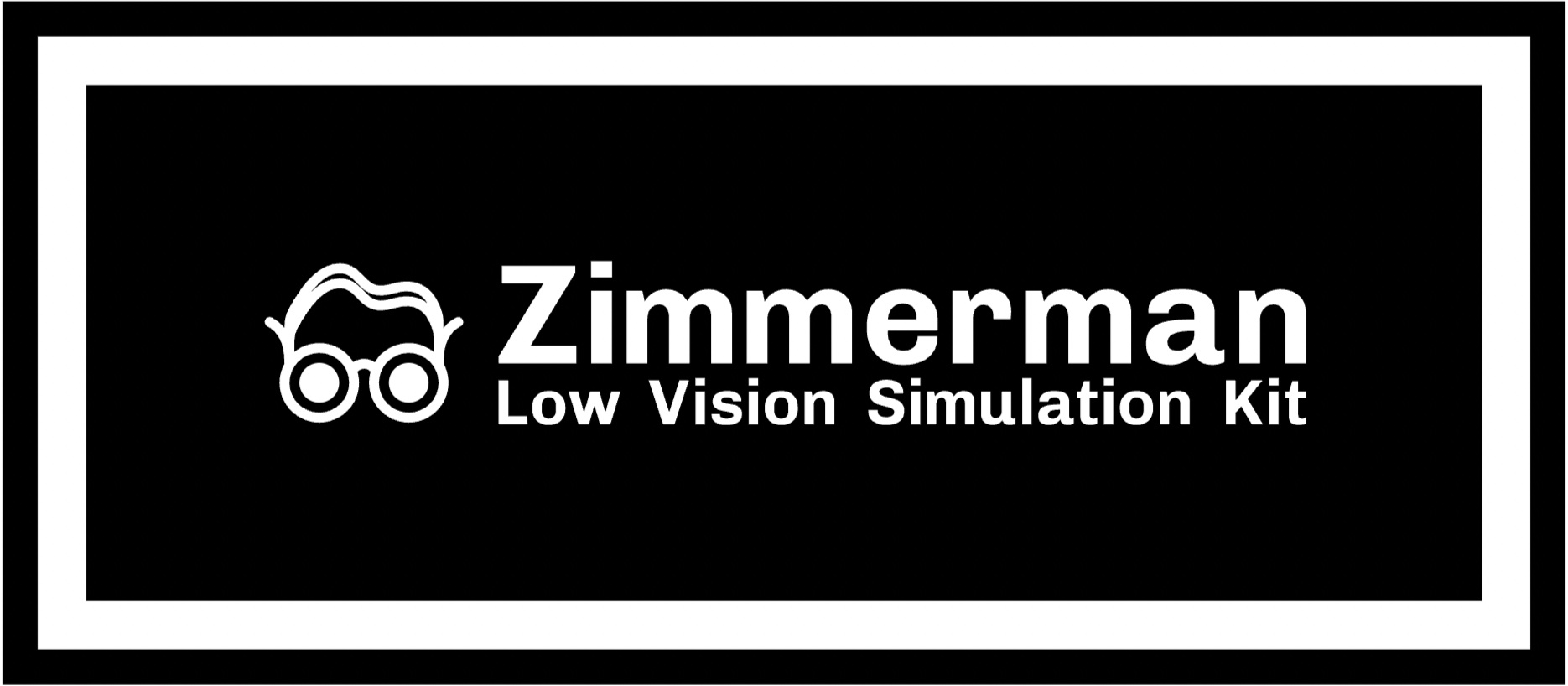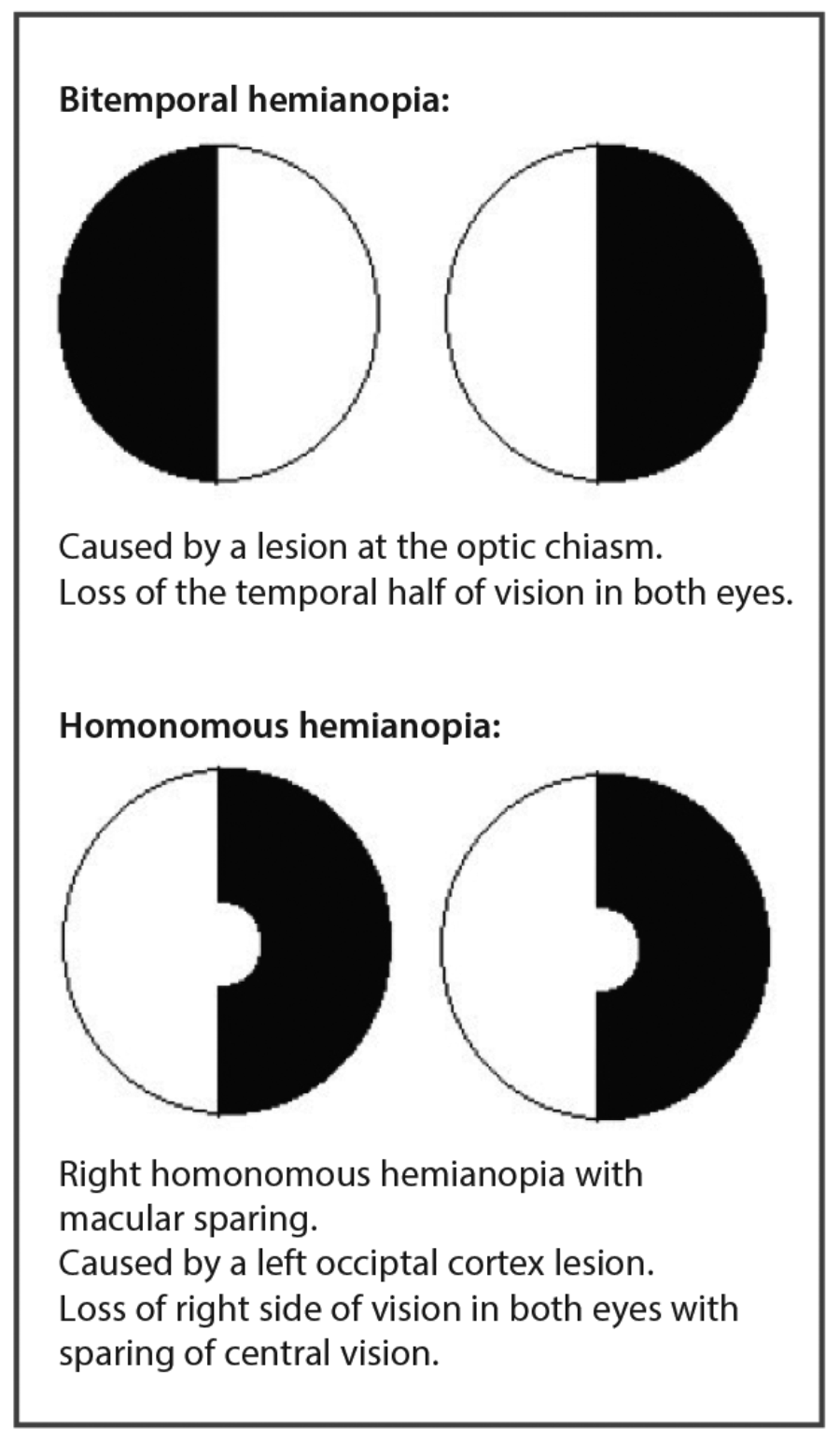
Naples, FL 34114
ph: 412-760-2481
lowvisio
Instructions
There are 11 separate lenses and funnels included in the Kit but only four individuals can use the simulators at a time. You can also combine the lenses and funnels to create different degrees of vision loss centrally as well as peripherally, binocularly or monocularly. For example, you can place a visual acuity lens (e.g., 20/800 - 6/240) and a peripheral field restriction funnel (e.g., 7°) in one of the eye-cups (right or left eye) and then use an black occluder lens in the opposing eye.
NONE OF THESE COMBINATIONS ACCURATELY SIMULATE A VISUAL PATHOLOGY OF A PERSON WITH LOW VISION. These lenses are very rough approximations of visual acuity loss and peripheral field restriction and should not be interpreted as a true representation of how a person with low vision "sees."
Wear each simulator for a period of time while conducting different activities. Simply looking through the simulator briefly will not provide the user with an understanding of the difficulties encountered by persons with low vision.
Use each simulator for a period of time in a variety of settings, i.e., indoors/outdoors, bright light/dim light and for near vision tasks (e.g., reading) as well as distance vision tasks (e.g., reading street signs).
Each pair of goggles has a nose groove for more comfortable wear so be sure to place the groove on the nose for a more comfortable fit.
IMPORTANT!! When using the simulator DO NOT look around the simulation by moving your eye (e.g., NEAR macular degeneration). Instead, keep your eye fixated in the center of the lens and either move your head or your body slowly to locate objects or perform the task. Your brain will want to "cheat" and look around the simulation, but resist the temptation. If you look around the simulation, you'll defeat the purpose of its use. Remember, persons with low vision cannot move their eyes around their disorder to achieve clear vision.
If used properly, the simulators will give the user a good understanding of some of the difficulties encountered when performing simple visual tasks.
The four visual acuity lenses are designed to be used primarily for distance vision tasks. If near vision simulation is desired (i.e., identifying spices in the kitchen), wrap numerous layers of clear plastic wrap or use the NEAR macular degeneration lens to achieve the desired simulation.
It is advisable to work in teams of two when using the simulators, particularly when movement is involved. One person should be the user and the other be the guide or spotter. If necessary, walk using a Human Guide Technique in unfamiliar areas where there may be stairs, curbs, drop-offs, or any other unexpected hazards. No one should use the simulators unsupervised.
Users who wear corrective lenses for myopia (nearsightedness), hyperopia (far-sightedness), and/or astigmatism may accurately depict visual impairment by simply removing their corrective lenses. Using these simulators compounds the amount of refractive error already experienced by the user.
When cleaning, wet each lens with water and use a soft cloth to wipe dry. Do not use a tissue or paper towel because wood-based products such as these will scratch the lenses. If fogging occurs, spray the lens with an anti-fog liquid.
HEMIANOPSIA LENSES
There are two types of hemianopic vision loss. The first is Bitemporal Hemianopsia where vision loss occurs temporally in both eyes. This loss is depicted in the link below. When using the hemianopsia lenses to simulate Bitemporal Hemianopsia place the occluded halves of each lens vertically as shown in the diagram. This affords the client/patient contiguous fused vision nasally, but the entire field of vision is restricted peripherally/temporally by 50% in each eye.
The second type of hemianopia vision loss is Homonymous Hemianopsia or HH. In this loss each field loss occurs in the same location in each eye, as depicted in the attached diagram. As an example, in the right eye the loss is on the temporal or peripheral side of the eye. In the left eye the loss occurs in the same location as in the right eye, on the right nasal half of the eye. When creating this simulation make sure the two lenses are positioned vertically in those two positions. HH vision loss is functionally difficult because the person has separate fields where vision occurs but then is lost. Vision is noncontiguous.

https://www.eyenews.uk.com/features/ophthalmology/post/how-to-examine
-the-visual-system-part-1-visual-acuity-visual-fields-and-eye-movements
The user assumes all responsibility for accidents or injury. Zimmerman Low VIsion Simulation Kit is not liable. Please read all of the above before using these devices.
Instructions are available in Spanish, French, and Japanese upon request.
Copyright 2013 Zimmerman Low Vision Simulation Kit. All rights reserved.
Naples, FL 34114
ph: 412-760-2481
lowvisio

